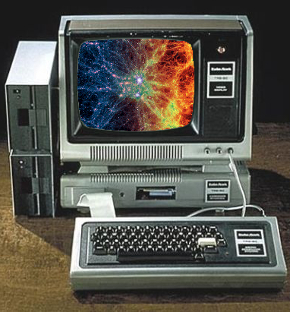Locals scoop solar origins
 Australian computer scientists have helped reveal the secrets of the origin of our solar system.
Australian computer scientists have helped reveal the secrets of the origin of our solar system.
New computer models and evidence from meteorites have shown that a low-mass supernova triggered the formation of the solar system.
About 4.6 billion years ago, a cloud of gas and dust that eventually formed our solar system was disturbed.
The ensuing gravitational collapse formed the proto-Sun with a surrounding disc where the planets were born.
A supernova - a star exploding at the end of its life-cycle - would have enough energy to induce the collapse of such a gas cloud.
Monash University experts played a big role in confirming the galactic origin story.
“Before this model there was only inconclusive evidence to support this theory,” said Professor Alexander Heger from the Monash School of Physics and Astronomy.
A research team, led by University of Minnesota School of Physics and Astronomy Professor Yong-Zhong Qian, focused on short-lived radioactive nuclei only present in the early solar system.
Due to their short lifetimes, these nuclei could only have come from the triggering supernova, and previous research has revealed signs of their decay products in meteorites.
Meteorites are like the leftover bricks and mortar in a construction site - they reveal what the solar system is made of, and in particular, what short-lived nuclei the triggering supernova provided.
“Identifying these ‘fingerprints’ of the final supernova is what we needed to help us understand how the formation of the solar system was initiated,” Professor Heger said.
“The fingerprints uniquely point to a low-mass supernova as the trigger.
“The findings in this paper have opened up a whole new direction of research focusing on low-mass supernovae,” he said.
In addition to explaining the abundance of Beryllium-10, the low-mass supernova model can also explain the short-lived nuclei Calcium-41, Palladium-107, and a few others found in meteorites.
The full paper has been published in Nature Communications.







 Print
Print